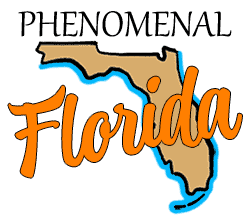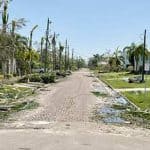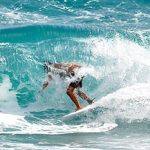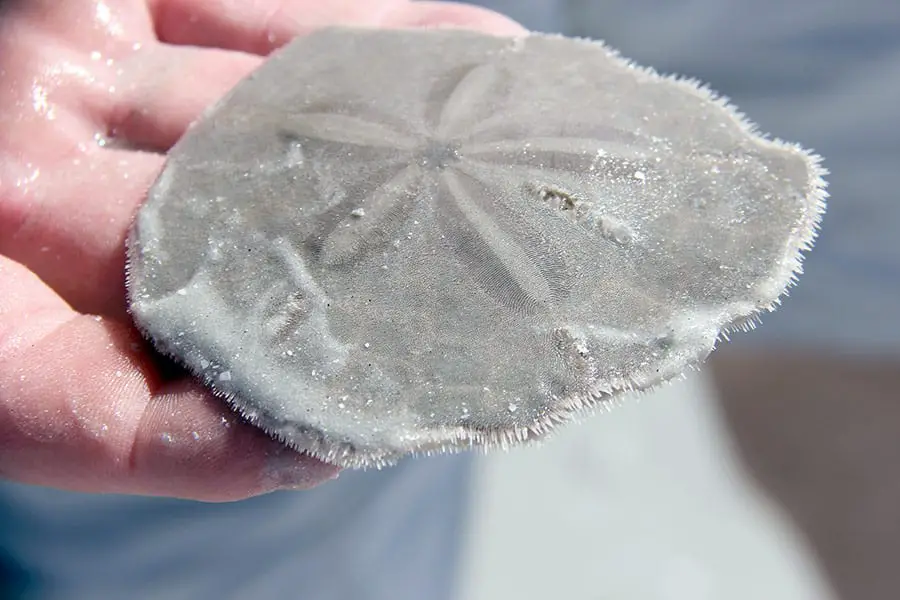
Sand dollars are entrancingly beautiful and commonly found on beaches in Florida. These sand dollars are the remains of a species of flat sea urchins known as clypeaster reticulatus, and they are popular beach treasures. But some might wonder: is it illegal to take dead sand dollars from the beach in Florida?
In Florida, as long as the sand dollar is dead when you find it, it’s perfectly legal to take it home from the beach. However, taking live sand dollars and “drying” them is considered harvesting a live organism and is subject to regulation by local and state authorities.
So how can you tell a dead sand dollar from a live one? What exactly are they when they’re alive? Are they endangered? Before you head of to the beach, learn the answers to these essential questions and more.
All I Need Is a (Sand) Dollar
Shelling is always a fun beach activity, and finding a sand dollar feels like a special treat. These delicate skeletons or “tests” are distinctively round and have a funny five-pointed, almost floral pattern in the middle of them. In life, they’re covered with tiny cilia and often sport vibrant colors.
In death, they turn a bone-white to brown color and eventually wash up in the tides to be found by happy beachgoers. As I mentioned previously, it is perfectly legal to add sand dollars to your beach treasure bag in Florida, as long as they were already dead when you found them.
Sand dollars are a kind of sea urchin. Sea urchins are spiny and rounded creatures that are often defined by a five-part structure: starfish, for example, are actually a kind of sea urchin. These peaceful creatures burrow through the sand and feast on whatever algae or organic matter they can find. Sand dollars often live in colonies on the seafloor, anchored to the sand and feeding on whatever comes their way.
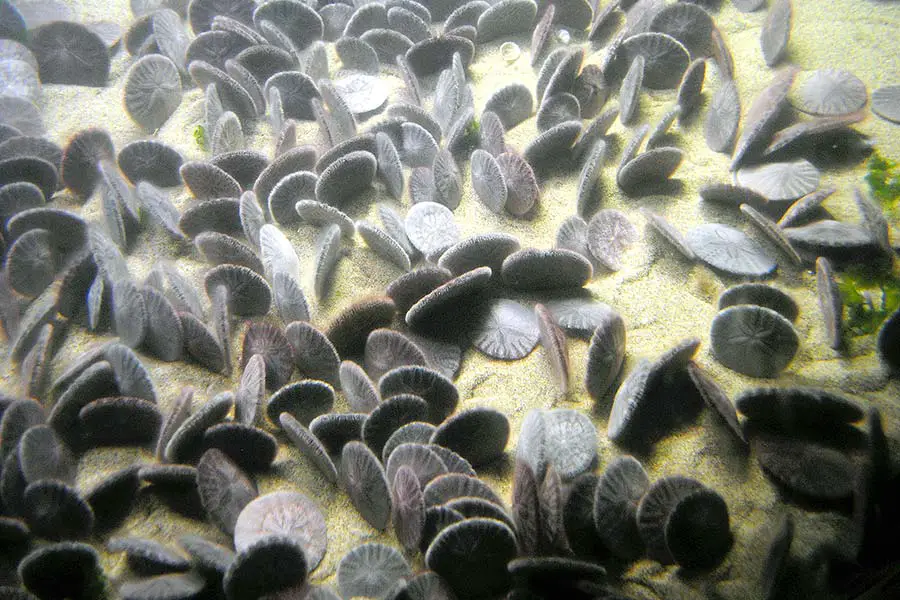
Sand dollars use two strategies to reproduce; they mostly reproduce asexually by releasing genetic materials into the waves at around the same time and hoping for magic to happen, a kind of reproduction called external fertilization. However, when faced with danger, larval sand dollars can actually clone themselves.
This cloning process takes about 24 hours. First, the larval sand dollar will divide itself into two genetically identical organisms. They’re smaller and somewhat more vulnerable than a single, larger organism; however, splitting in two is a good way to hedge for survival against predators.
Sand dollars don’t have many natural predators: lobsters, sea otters, starfish, and some birds prey upon them, but their strategy of burrowing into the sand helps keep them safe. If they get washed ashore, they will dry out and die. Otherwise, like most other living things, they simply succumb to the ravages of age. Sand dollars have an average life expectancy of around 8 to 10 years.
How to Tell if Sand Dollars are Dead?
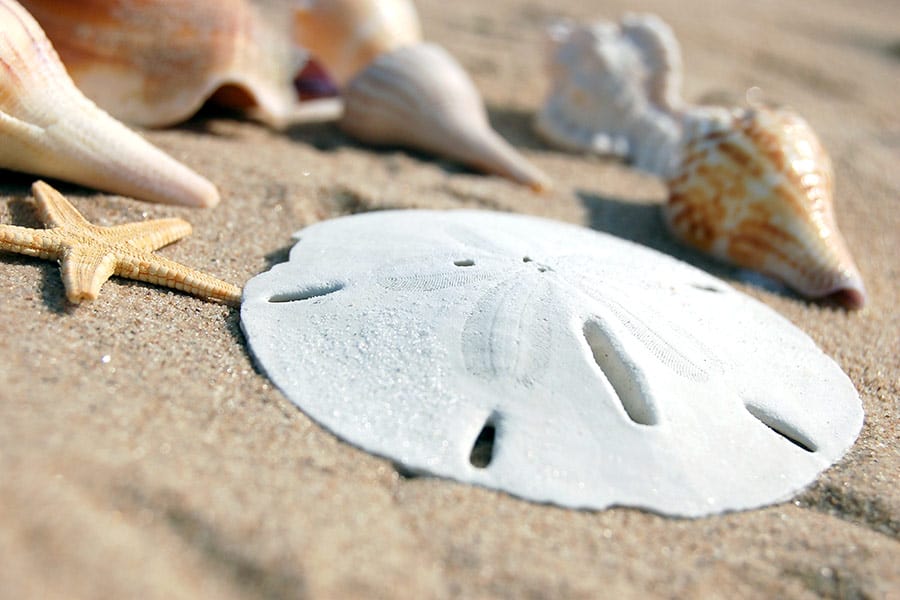
Dead sand dollars look like sea shells. They are light yellow to brown or white in color. There’s a star pattern in the center of the test, with tiny holes along it every so often. They’re lightweight and hollow, and sometimes you can see light through the holes in the shell.
You might occasionally find a dead sand dollar that hasn’t decomposed yet. These recently deceased urchins are dark grey, like the color of fresh cement. They have short spiny hairs on them: if they’re moving, the urchin is alive. If they’re still, it’s dead.
Living sand dollars have brightly colored spines, sometimes in a shade of purple, brown, or red. When handled, living sand dollars will leave a yellow stain on your skin from a substance called echinochrome. Don’t worry: it’s harmless! If you find a live sand dollar, return it to the sea.
Where Can You Find Sand Dollars in Florida?
Any beach with good shelling is likely to have sand dollars, and many of the best shelling beaches are along Florida’s Gulf Coast. The Tampa Bay area and the Sarasota area have some of the best shelling in the state. However, if you’re planning to visit the keys or the Atlantic coast, rest assured that you can also find sand dollars in these places.
The best place to find sand dollars in Florida is Sanibel. Sanibel and Captiva are located south of Sarasota, near Fort Myers. Sanibel is an excellent place to visit: it has some of the most pristine beaches in Florida, untouched wildlife preserves, and a fun local character. In addition, its position jutting out into the Gulf of Mexico makes it a phenomenal shelling beach, and sand dollars are commonly found on most any beach here.
Phenomenal Florida Fun Fact: Sand dollars are also known as “sea cookies,” “sea biscuits,” “sand cakes,” “cake urchins,” and “snapper biscuits.”
Other Posts of Interest
- Can You Find Sea Glass In Florida?
- Is It Warmer On The East Or West Coast Of Florida?
- Is Red Tide A Problem In Florida?
- Where Is The Best Place To Find Shark’s Teeth In Florida?
What Is The Best Time of Year to Find Sand Dollars in Florida?
Storm season is the best time of year to find sand dollars in Florida. Rough weather churns up the ocean and helps uncover seashells and sand dollars, which are then washed ashore by vigorous waves. May through October is generally considered the storm season in Florida: thunderstorms are pretty common during this time of year and can whip the sea into quite a frenzy.
The absolute best conditions for finding sand dollars are to go to the beach at low tide the morning after a big storm. The storm will churn the sea bed and release tests or deceased sand dollars from the substrate, and they will eventually wash ashore. Low tide is best for beachcombing in general, and the morning hours are much less trafficked at the beach, meaning nobody has scooped up the good shells yet!
Why Do Sand Dollars Have Holes?
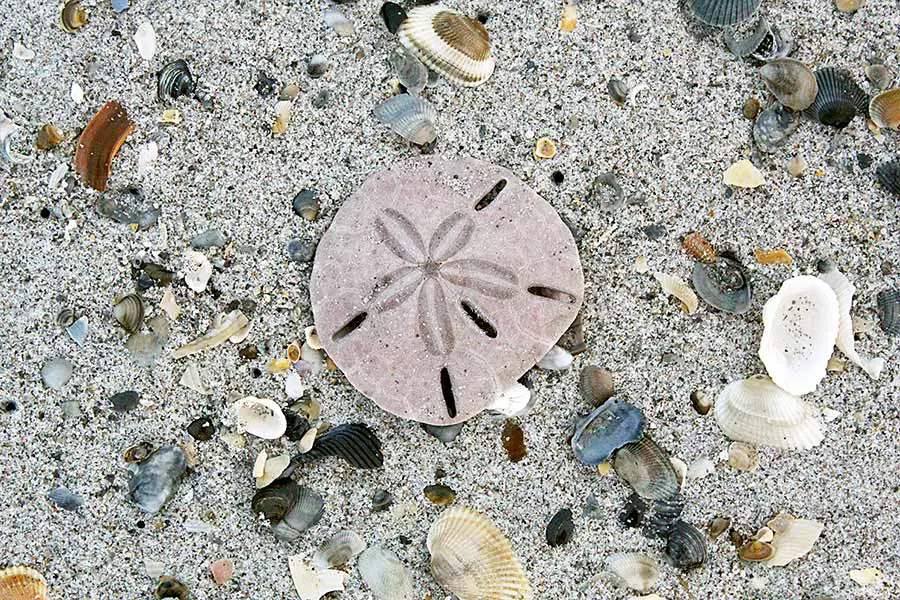
The holes in a sand dollar are called lunules. You might be surprised to learn that these holes help the living sand dollar stay anchored to the sea floor. The disc-like shape of these creatures makes them very aerodynamic. If sand dollars didn’t have lunules, the constant flowing of the ocean would pick them up and toss them around in the current.
The lunules act like speed brakes that help break up the water flow over the sand dollar. This interruption in the smooth flow of water prevents the living sand dollar from being ripped away in the current. If you’ve ever looked out an airplane window when you’re close to landing, you may have seen funny flaps deploy from the top of the wing. Those wing spoilers have the same exact purpose as the lunules: they break up lift!
Are Sand Dollars Endangered in Florida?
Sand dollars are not considered an endangered species. However, Florida state law prohibits taking shells with live organisms inside unless you have a recreational saltwater fishing license. Once you get your license, you can technically harvest up to 100 pounds of shells — including sand dollars — in a day. There are some exceptions to that, though, as there are some localities with stricter restrictions.
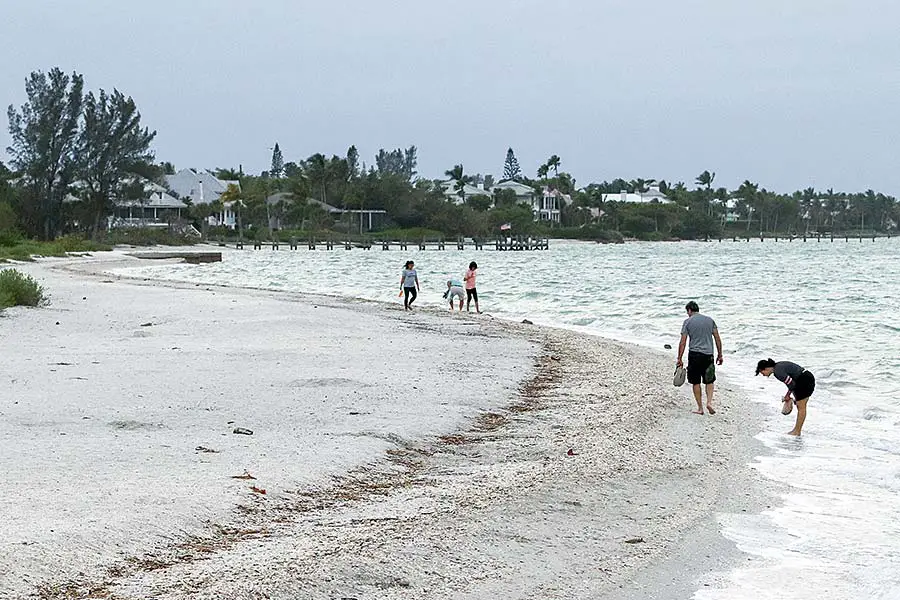
In Lee County, which includes Sanibel, you may not take living sand dollars. If you do, you can face 60 days in jail and a $500 fine. In Manatee County, you may only take two live sand dollars.
Most Floridians would encourage you to return living sand dollars to the ocean. There are plenty of dead sand dollars to be found, and these little critters are an important part of the coastal ecosystem. The best practice for beachcombers is only to collect dead or fossilized specimens.
Why are Sand Dollars Called Sand Dollars?
Sand dollars are not considered legal tender: you can’t buy a Publix sub (a Florida delicacy) or a gallon of gas with sand dollars. So why the funny name? The term “sand dollar” came from early American beachgoers, who thought the tests looked like the silver dollars in circulation at the time. Most of us don’t use dollar coins regularly anymore, so the name has become a little confusing in recent times.
Another reason for the sand dollar’s name is that they’re roughly coin-shaped. Ancient folklore says that the sand dollar is a coin lost by a mermaid or that it is a washed-up coin from the lost city of Atlantis. These are fun ideas, but at the end of the day, they’re just happy little sea urchins burrowing through the seafloor — and in its own way, that’s just as fun.
My Two Cents on Sand Dollars
The sand dollar is a beautiful and intriguing creature. The fascinating symmetries and designs of sand dollars have inspired artists and daydreamers for centuries, and many modern beach-dwellers love to decorate their homes with sand dollars and sand dollar art.
Sand dollars are prized finds at the beach: everybody from the kids to grandpa loves finding these seaborne discs. Luckily for everybody who comes to the beautiful beaches of the Sunshine State, collecting sand dollar tests is perfectly legal here.
If you have a recreational saltwater fishing license, collecting live sand dollars is allowed in most places, but the best collectibles are the white tests: there’s really no reason to take a live sand dollar from the sea. So head on out to the beach, and be sure to bring your hat and a sand scoop. There are sand dollars aplenty along Florida’s many beaches.
